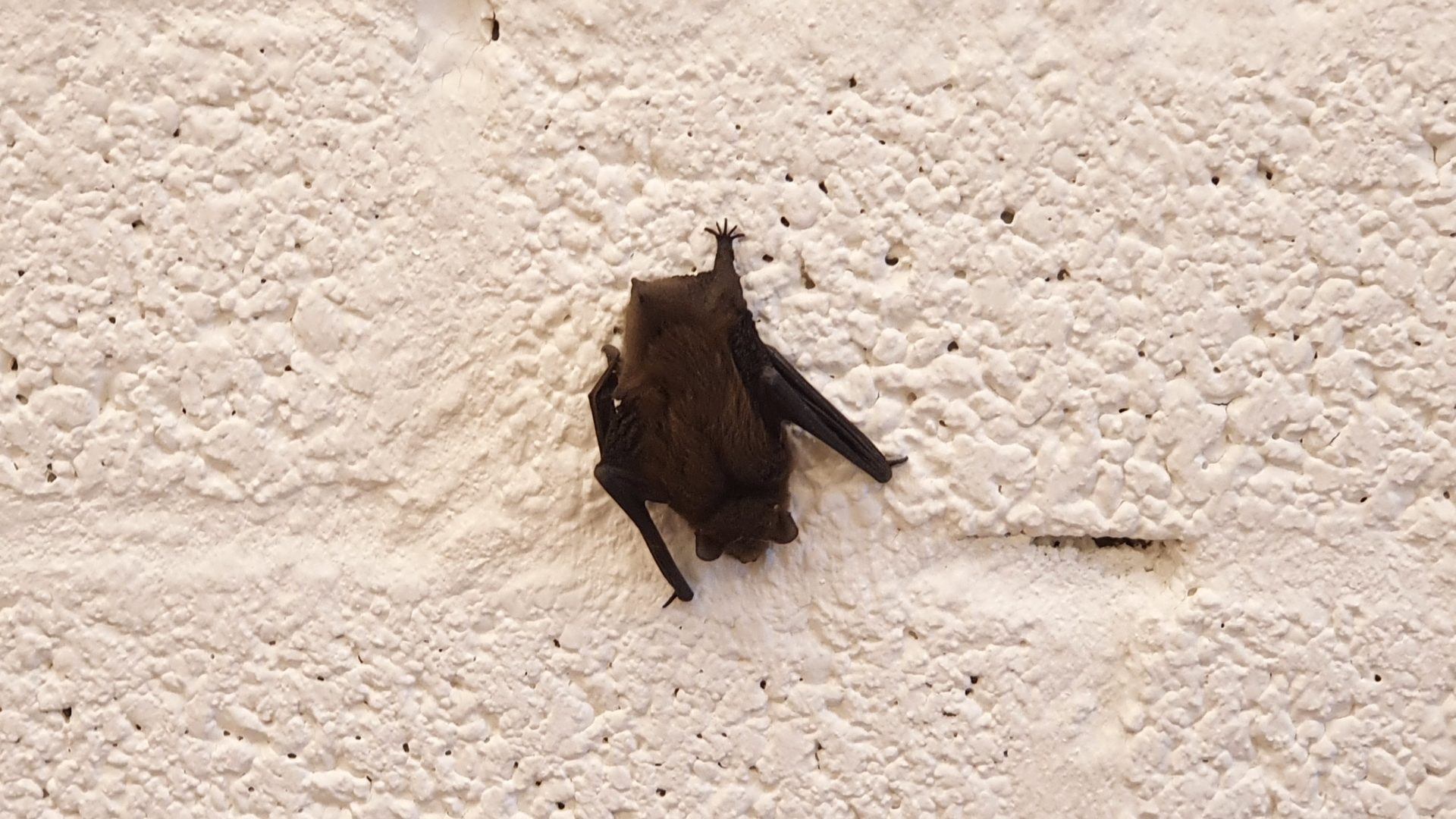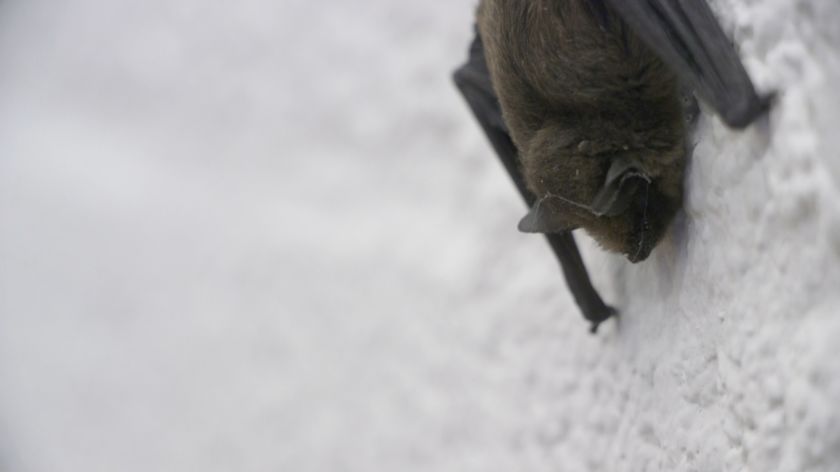At Thomas van Aquinostraat 1 bats are flying through the hallways
Staff working at 1 Thomas van Aquinostraat have recently had to share their building with a roost of invaded bats. The nocturnal flyers probably entered the building accidently. A certified bat catcher has already brought 15 of them outside again.
An employee of Radboud Academy found a live bat on her desk chair, a colleague working on the next storey almost stepped on the small body of a bat and, at the editorial office of Vox, the nocturnal animals were nervously flying among the computers this week. Thomas van Aquinostraat 1 is plagued by bats.
‘This is the twelfth one I’ve found,’ said the post-doc animal ecologist Martijn Dorenbosch after a walk through the building. ‘I thought that you were exaggerating when you phoned to say that there were a lot of bats here, but there really are a lot!’
Dorenbosch is a bat expert. After a request from Vox, he inspected the situation. He bent over a small black animal that seemed to be sitting on a threshold catching its breath after a stressful flight through the corridors. ‘It looks like it’s panting with its mouth open. But it’s actually transmitting echo location sounds. It’s lost and is trying to get its bearings.’
Panelled ceilings
At the beginning of this week the bats were first detected in the only building remaining on Thomas van Aquinostraat (after the demolition in 2018). The mammals hang from the interior walls or try to hide under the panelled ceilings. The stairwells seem to be a popular place to flutter.
Dorenbosch explained that these are dwarf bats, the most common species in the Netherlands. He couldn’t say with certainty why they chose to enter the building on Thomas van Aquinostraat. ‘Perhaps they flew in accidently and now can’t find the exit. Or perhaps they were under the roof, found a hole and then got lost. Or there was a colony that was disturbed by construction work.’
‘Perhaps they flew in accidently and now can’t find the exit’
Bats are protected in the Netherlands. That means that you can’t simply catch them or try to control them. Frits Oosting, a technical building manager at the Department of Property Management (UVB) had received a number of notifications from 1 Thomas van Aquinostraat earlier this week. But he wasn’t very concerned. ‘Some staff are afraid of bats,’ he said. He himself wheeled the desk chair with the living bat into the woods.
According to Dorenbosch, people don’t need to panic at the sight of these mysterious creatures. No, they don’t have corona. Yes, theoretically they could transmit rabies, but that disease doesn’t occur in the Netherlands. But it is a reason never to touch the animals without gloves. If they panic, they could bite. ‘Bats are actually very useful to people,’ the expert said. ‘They catch lots of insects, including mosquitoes.’
But now the question remains: what should the university do with these new inhabitants? ‘I’d open the windows at night,’ Dorenbosch suggested. ‘Then I think they’ll find their way out again by themselves.’

Scoop net
That same afternoon, bat researcher Eric Jansen of the Mammal Association arrived at the offices of Vox. The UVB had contacted him to help with the problem. ‘I understand that you’ve already walked through the building and now know where they are?’ He’s allowed to do what ordinary people aren’t: capture the animals. He walked through the hallways with a scoop net and a plastic cage. He plucked a bat from the wall here and there as if they were mountain flowers. ‘They’re sleeping, so they’re easy to catch,’ he explained. As long as the animals are in his dark fist, they remain calm.
Jansen concluded that these are young dwarf bats. ‘I think they were looking for a place to spend the winter. Probably one of them flew inside through an open window. The animals are very social, so if one of them calls then the others come too.’
The scoop net wasn’t necessary. Jansen needed only a ladder to be able to catch all of the bats. Some of them peeped loudly when they were removed from behind a fluorescent tube. The companions in the small container started to flutter. ‘They hear one another. You can also see that they know one another because they immediately crawled on top of one another in the container.’ That means that the infiltrators belong to the same colony.
Unfortunately, a few dead bats also ended up in his plastic cage. The researcher said they were dehydrated. ‘So they’ve been in the building for quite some time. They can go without water for about three days.’
At the end of his inspection, Jansen had collected 18 bats. He planned to give them water with nutritive salt so they could regain their strength. Plus a few squeezed-out mealworms. ‘I’ll release them this evening near the hospital; there are a lot of them there.’
Jansen was impressed by his ‘harvest’. In the thirty years that he’s been doing this work, he’s only twice caught this many bats in just one building. ‘We call this an invasion.’ He hopes that the problem has been solved. If not, he’ll gladly return.




